Ancient Greek food habits showed the hardships of the Greeks in the agricultural field, and it also was distinguished by the ancient greek period’s providence. Despite the sparingness of food, there existed a massive diversity of ingredients. And, mostly the Greeks belonging to a higher class or with wealth celebrated various rituals and ceremonies with elaborated feats and meals.
For the most part, Greek food mainly harbored ingredients from the “Mediterranean triad,” consisting of grapes, olives, and cereals. The central triad carried commercial values, and the ancient Greeks used them in many ways.
At the same time, many other ingredients, like legumes, were also just as essential to the average diet. Research shows that ancient Greece’s agricultural system would not have succeeded without the cultivation of legumes.
Our knowledge of ancient Greek food and cuisine habits primarily derives from textual, archeological, and artistic evidence. Foods of Ancient Greek are one of the most famous inventions and discoveries in history.
Here are the top 10 ancient Greek foods.
What did the Greek Gods and Greek Goddesses eat?
Ambrosia was the main food/drink of the Gods and Goddesses in the ancient Greek myths. It is often referred to as “the Golden Nector of the Gods” and is believed to confer longevity or immortality upon whoever consumed it.
How did the Greeks sweeten their food?
The Greeks used honey or grape must as sweeteners. They often mixed honey or grape must in bread to sweeten it and sometimes added it to wine.
What fruits are native to Greece?
Fruits native to Greece include apricots, oranges, peaches, nectarines, cherries, figs, and grapes. The most famous Greek-native would be olives.
10. Bread and Cakes
Content

During Greece’s annexation by Rome during the 3rd century B.C., commercial bakeries were famous and well-spread. In fact, according to Pliny the Elder, the production of bread shifted from being a familial task to being “industrial,” thanks to skilled artisans. Likewise, Plato also preferred the home production of bread over commercial production.
Moreover, Gorgias even described the act of baking bread as an “Athenian novelty,” as selling homemade goods was a break with tradition.
In ancient Greece, the people served bread with a condiment known as opson. In English, we sometimes refer to it as “relish,” but in ancient Greece, opson was a generic term for any condiments that accompanied bread, whether meat or fish, vegetables or fruits.
Ancient Greeks also consumed cakes for both secular and religious reasons. Moreover, ancient writers also mention a sort of honeycake popular during this time, called melitoutta.
9. Wheat
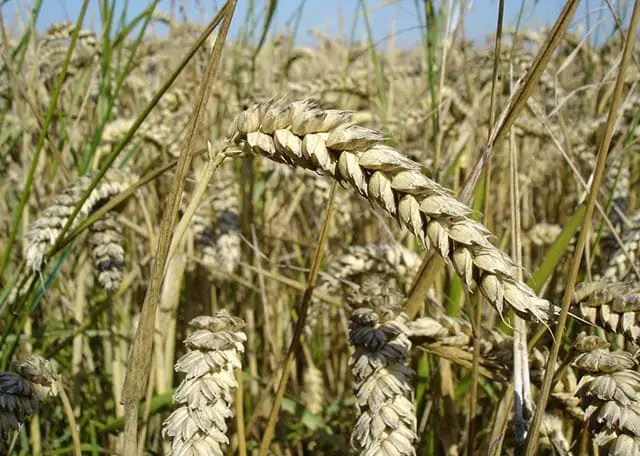
Ancient Greek food consisted of many wheat varieties. The Greeks softened the wheat grains by soaking them in water. Then, they would have either reduced the wheat into gruel or grounded it into flour for kneading. The kneaded wheat, similarly, formed into loaves or flatbreads. The Greeks then consumed the loaves either plain or mixed them with cheese or honey.
In like manner, the ancient Greeks also leavened the wheat loaves with alkali and wine yeast. Greek bakers baked the dough loaves at home in clay ovens. Moreover, since bread wheat was challenging to grow in the Mediterranean, it was generally associated with the upper classes. The poor, meanwhile, ate coarse brown bread baked from emmer wheat.
8. Legumes

Since prehistoric times, legumes were essential to the Greek diet, Harvested in the Mediterranean. The earliest and most common legumes found in ancient Greece were lentils. Furthermore, lentils were also one of the first domesticated crops introduced to Greece.
Lentils and chickpeas are the two most popular legumes mentioned in classical literature. Other legume types, such as the bitter vetch, were present in ancient Greek food hierarchy from 8000 BCE. Most of the ancient literature that mentions bitter vetch describe it as animal food. The Greeks also believed that it had a “disagreeable taste.” Despite that, several classical authors suggest using this legume for medicinal purposes.
Similarly, black beans were also part of the Greek diet. Homer also elucidates a metaphor involving the threshing of a black bean in the epic “Iliad.” Another legume plant part of ancient Greek foods was the broad beans, also known as fava beans. Ancient Greeks ate them as main dishes and included them as desserts, sometimes mixed with figs. Classical authors also attribute a myriad of medicinal qualities to fava beans. Likewise, other popular legumes in ancient Greece included chickpeas, grass peas, lentils, and garden peas.
7. Fruits and Vegetables
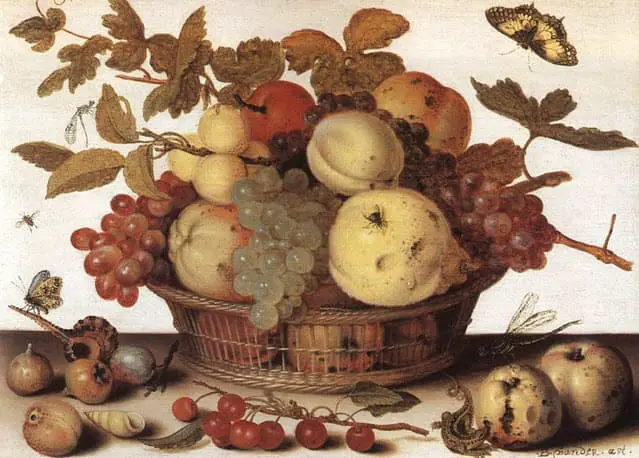
Fruits and vegetables were a staple and a significant part of the ancient Greek foods palette.
Ancient Greeks consumed less meat and more fruits and vegetables than the typical diet of modern society. To sustain the growth of fruits and vegetables, ancient Greek farmers used legumes to replenish exhausted soil, known as Xenophon.
Likewise, ancient Greeks ate soups, boiling or mashing them and adding seasoning with olive oil, herbs, and vinegar. Poorer families also had oak acorns as the main ingredient in vegetable stews. Classic appetizers back then included raw or preserved olives.
In the same way, fresh vegetables were expensive in larger cities. Thus, the poor had to make do with dried vegetables. Correspondingly, a workman’s typical dish consisted of lentil soup.
On the other hand, a soldier’s fare consisted of cheese, garlic, and onions. As mentioned before, ancient Greeks considered bitter vetch a famine food because of its unsavory taste.
Similarly, either fresh or dried, fruits were for desserts, including nuts. Principal fruits included figs, raisins, and pomegranates. Ancient Greeks also ate dried figs as appetizers or when drinking wine, often accompanied by grilled chickpeas, chestnuts, and beechnuts.
6. Meat and Fish
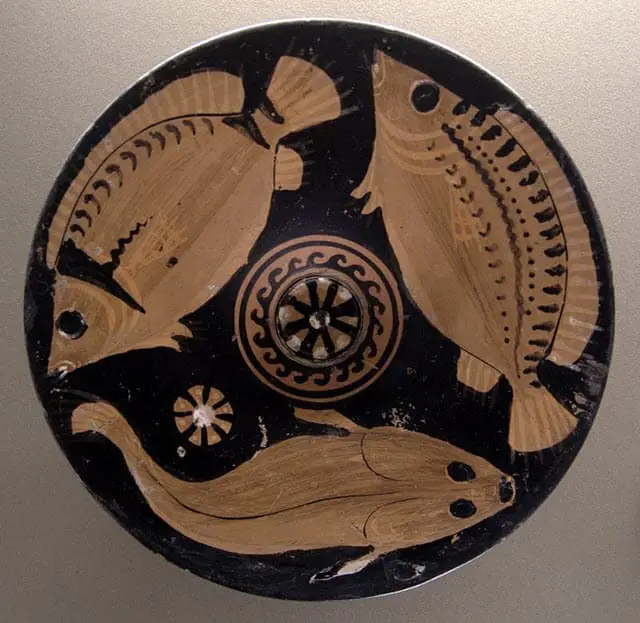
Meat was not a massive part of the ancient Greek food palette, as evidenced by the texts from the 5th century B.C. onwards.
However, this may result from the genre and may not be tangible evidence of changes in ancient Greek farming and food customs.
The Greeks commonly ate fresh meat during sacrifices, making sausage much more common. Additionally, the ancient Greeks also often consumed inner organs and considered many such dishes as delicacies besides the flesh of animals.
Likewise, fresh seafood and fish were also common on the Greek islands and the coast. The Greeks ate them locally and also transported them inland.
Similarly, for citizens of Athens, sardines and anchovies were regular fares. Vendors sometimes sold them fresh but more frequently salted.
5. Fowls and Eggs
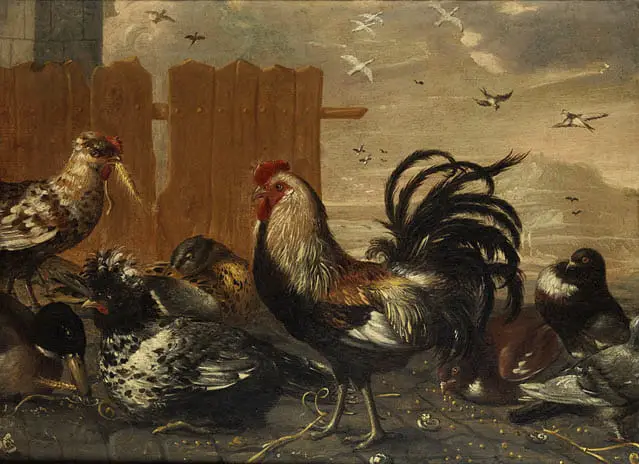
Birds and fowls were an extensive and diverse part of ancient Greek foods custom. Ancient Greeks had a wider variety of birds compared to today.
Pheasants were available to hunt as early as 2000 BCE, with domestic chickens brought from Asia Minor as early as 600 BCE. In the same way, the epic- the Odyssey also mentions domesticated geese (800 BCE).
Varieties of birds in the ancient Greek foods platter consisted of quails, capons, moorhens, mallards, pheasants, pigeons, larks, and doves.
These fowls were even set up for sale in markets. Additionally, hunters caught blackbirds, thrushes, chaffinch, larks, jays, starling, and jackdaws for food.
The ancient Greeks ate other fowls, comprising sparrows, blackcaps, siskins, rock partridges, grebes, plovers, and coots. Similarly, the Greeks also bred the quails and the hens for meat and their eggs.
4. Dairy Products
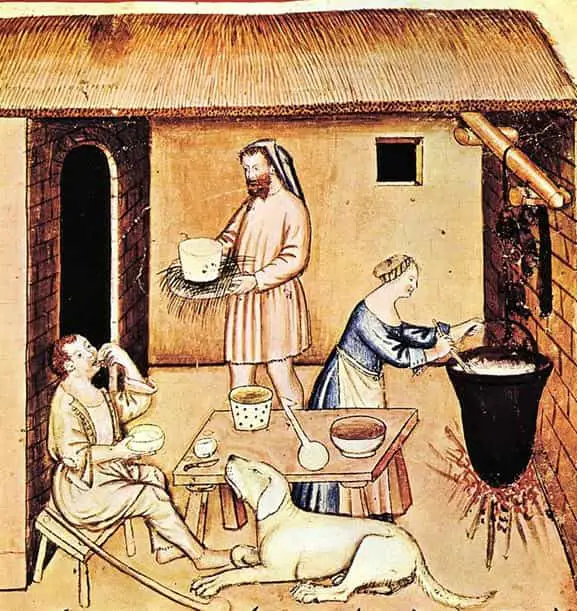
Popular dairy products include milk, butter, cheese, and yogurt. Milk was a sophisticated part of the ancient Greek food palette, with ancient country dwellers drinking milk more than those who dwelt in the cities.
Milk was also seldom used in cooking. Butter, likewise, was known but rarely used.
Cheese and yogurt, on the other hand, were widespread. The Greeks also enjoyed different dairy product varieties, such as pyriatē and oxygala (curdled milk products, similar to cottage cheese).
Similarly, goat’s and ewe’s cheese were popular and staple foods. Vendors sold both complex and fresh cheeses wrapped in Drakontion leaves.
The Greeks often ate cheese as is or with honey or vegetables. They also used cheese while preparing many dishes, including fish.
3. Spices and Seasoning

Spices and Greek seasonings were popular condiments and a considerable part of the ancient Greek food culture. Sappho mentions cassia as the first spice in her poem about the marriage of Hector and Andromache.
In like manner, ancient Greeks primarily used two forms of pepper in cooking and medicine- black pepper and long pepper.
Other plants harvested for spice, known as “pot-herbs,” included the dill, cumin, coriander, star anise, fennel, rue, celery, and celery seeds.
2. Wine
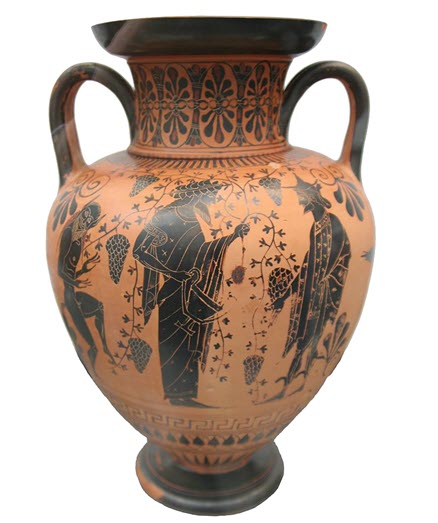
The wine was perhaps one of the most fundamental staples of ancient Greek food culture. The Greeks made red rosé and white wines, which, much like today, varied in quality. The ancient Greek palette was incomplete without it, ranging from valuable vintages to tabletop wines. The best wines in ancient Greece came from Thásos, Lesbos, and Chios.
Similarly, the Greeks sometimes used honey to sweeten the wine. They also made medicinal wines by adding thyme, pennyroyal, and other herbs. Often, wine was cut with water, with the drinking of akraton or “unmixed wine” coveted by barbarians. The Greeks believed that unmixed drinking wine likely led to madness and death.
1. Barley and Millet

Due to the ease with which it grew, barley was perhaps one of the most important ancient Greek foods besides legumes. Barley-based bread was nourishing, but the ancient Greeks often roasted them before milling them into coarse flour because of its weight.
Bakers also used barley flour to make maza, the essential yet popular Greek dish. Hosts of the house would serve maza cooked or raw, even as a broth. The Greeks also made maza into dumplings or flatbreads. Similarly, millet grew in abundance in Greece as early as 3000 BCE, with the Greeks using it to make various bread dishes.
Conclusion
A majority of Greek city-states based their prosperity on agriculture. They produced the necessary agricultural surplus that allowed many Greek citizens to pursue other trades.
Many ancient Greek foods and cuisine practices have also survived to this day. Food connoisseurs still consider Greek cereals, olives, and wine some of the world’s best.
Ancient Greeks harvested these three principal foodstuffs in ancient times because they suited the Mediterranean climate. Greek agricultural practices also spread throughout the Mediterranean due to the Greek colonization of Asia Minor and Magna Graecia.
